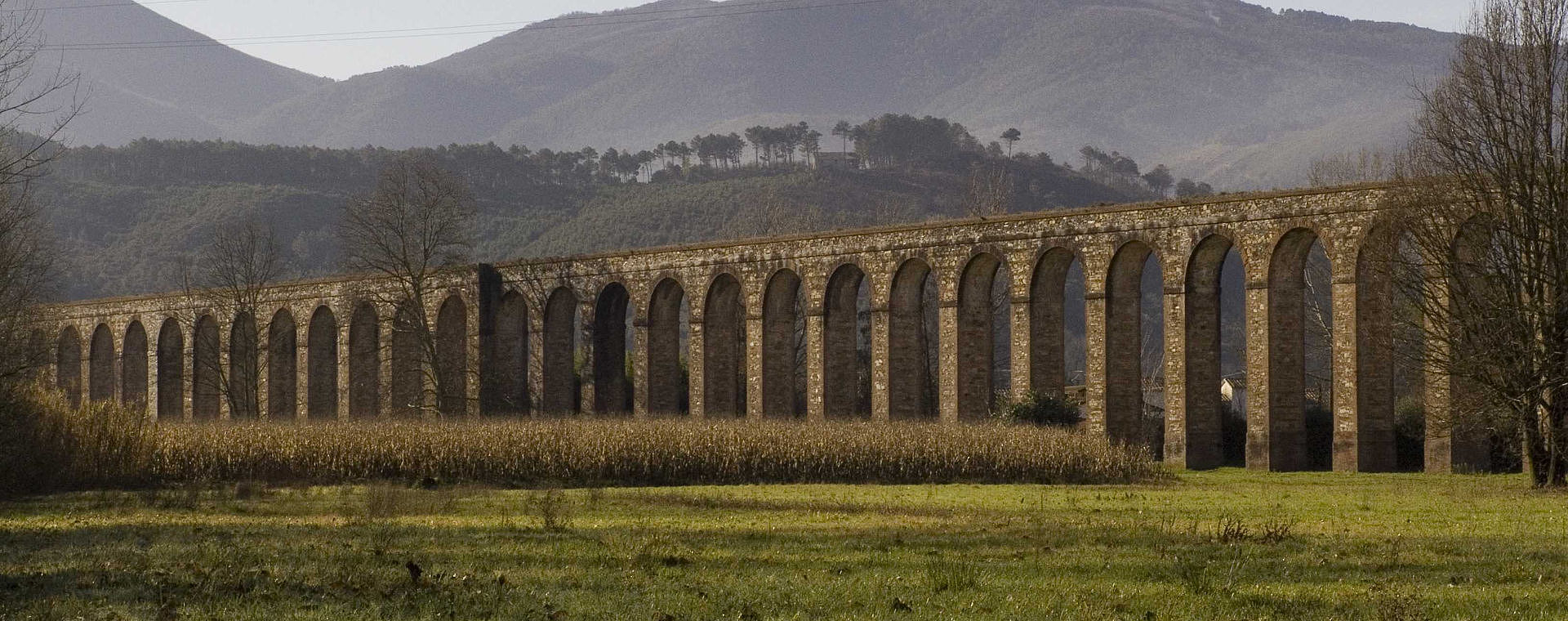Aqueduct of Lorenzo Nottolini
Testo disponibilità:
The Roman style aqueduct is a work of great relevance by Lorenzo Nottolini, from Capannori. The architect was born in Segromigno in Monte and became famous for his activity at the service of the royal duchy of Lucca between 1818 and 1848.
The supply of water for the city of Lucca was an important matter because there were serious problems connected to public health. In fact, while the rich families of the city received water directly from the surrounding hills, the humble ones took impure and unhealthy water from the well, and thus cause of epidemies.
In 1732 Giuseppe Natalini prepared a study in order to draw water from Badia di Cantignano, but in 1763 it was decided to take it from the mountains over Guamo. However, the works did not really start since 1822, when Maria Luisa of Borbone firmly expressed the wish of giving Lucca high quality water and ordered the construction of the aqueduct, putting Lorenzo Nottolini in charge. The works began in 1823 and were interrupted many times before the final conclusion in 1851.
Located mostly in the territory of Capannori, the aqueduct is a monumental work. It is 4 km long and it is characterized by the mix of elegant classicism and simple and severe architecture. It is constituted by a straight line of 459 stone archs (12 metres high), on the summit of which there are two drain pipes. Two reinforced counterforts were built in order to give stability to the structure. Unfortunately, some of the archs were pulled down in order to permit the construction of the highway in the 20th century.
The acqueduct crosses all the plain of Lucca and takes water from Guamo, at the foot of Monte Pisano, to the little temple situated in S.Concordio.
According to the project of Nottolini, the water was drawn in Guamo, from 18 different springs, and then conveyed in the circular temple-cistern built in 1823-25. From there, the water was filtrated by the passage between stones and grates ideated in order to allow for the sedimention of all impurities, and only then it was conveyed in pipes directed to the city.
Nottolini conceived two different ways for the water, according to its source: specifically, the spring water was conveyed by a privileged way to the public and private fonts of Lucca, while the other supplied the monumental fountains of the city. This diversification of destinations denotes Nottolini's will to privilege the purest, drinking water.
The aqueduct ends in the little temple of San Concordio, a circular building in neoclassical and doric style, in which water was gathered in a marble pool. Nottolini gave great importance to details and that is apparent, for example, in the realization of a mobile system around the cistern, that intends to preserve the iron tubes from possible damages caused by thermic dilatation. From the temple of S.Concordio, passing from the rampart of San Colombano, the water was then conveyed to the city, where it supplied the complex system of fountains. It is to notice that in the original plan the aqueduct should have led the water directly within the walls of the city. But not wanting to ruin the suggestive city walls, Nottolini modified the project and eliminated the archs that should have linked the structure of the aqueduct to the ramparts.




